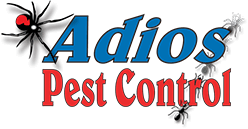Imagine the peace of mind knowing your home is fortified against unwelcome pest invaders, no matter the season. From the first spring bloom to the winter's chill, different pests emerge with unique challenges, turning home protection into a strategic year-round mission.
The Seasonal Pest Landscape
Pests aren't just an occasional nuisance—they're opportunistic creatures that adapt to changing environmental conditions. Each season brings its own set of potential intruders, making adaptive prevention crucial for maintaining a pest-free home.
Seasonal Pest Breakdown
Understanding the seasonal patterns helps you stay one step ahead:
- Spring: Ants, termites, and emerging insects become active
- Summer: Peak season for mosquitoes, flies, and stinging insects
- Fall: Rodents and spiders seek indoor shelter
- Winter: Mice, cockroaches, and overwintering insects infiltrate warm spaces
Comprehensive Seasonal Pest Prevention Strategies
1. Spring: Emerging Threats Containment
As nature awakens, so do pest populations:
- Inspect home exterior for winter damage
- Seal foundation cracks that developed during cold months
- Clean gutters and remove debris
- Trim vegetation away from house perimeter
- Check for early termite signs and wood damage
2. Summer: Intensive Barrier Protection
The height of pest activity requires multi-layered defense:
- Eliminate standing water to prevent mosquito breeding
- Use screens on windows and doors
- Keep outdoor garbage sealed
- Maintain landscaping to reduce hiding spots
- Consider professional pest control solutions for comprehensive summer treatment
3. Fall: Preparing for Invasion Season
As temperatures drop, pests seek warmth and shelter:
- Seal exterior holes and gaps
- Store firewood away from house
- Clean kitchen thoroughly
- Inspect attic and basement for entry points
- Remove fallen leaves and organic debris
4. Winter: Fortifying Indoor Defenses
Cold months don't mean pest-free living:
- Inspect interior walls and floors for small cracks
- Keep indoor spaces dry and clean
- Use door sweeps and weatherstripping
- Store food in airtight containers
- Maintain consistent indoor temperature
Advanced Prevention Techniques
Moisture Management
Pests thrive in damp environments:
- Fix leaky pipes immediately
- Use dehumidifiers in humid areas
- Ensure proper home ventilation
- Check basement and crawl spaces regularly
Natural Deterrent Strategies
Environmentally-friendly pest prevention:
- Plant pest-repelling herbs like mint and lavender
- Use essential oils as natural repellents
- Maintain clean, dry environment
- Encourage natural predators like birds
Understanding Pest Psychology
Successful prevention goes beyond physical barriers:
- Remove food sources
- Minimize hiding spots
- Create inhospitable environments
- Understand pest behavior patterns
Economic Impact of Prevention
Investing in pest control saves money long-term:
- Average pest removal costs: $300-$1,000
- Preventative measures: $50-$300 annually
- Potential property damage from untreated infestations can reach thousands
Professional Intervention Points
Recognize when expert help is crucial:
- Persistent infestations
- Structural damage signs
- Health risk indicators
- Complex or multiple pest issues
Final Thoughts: Proactive Pest Management
Pest prevention isn't a one-time event—it's a continuous, adaptive strategy. By understanding seasonal patterns, maintaining a clean environment, and being proactive, you can create a robust defense against unwelcome home invaders.
Stay vigilant, stay informed, and remember that the best pest control is prevention.
